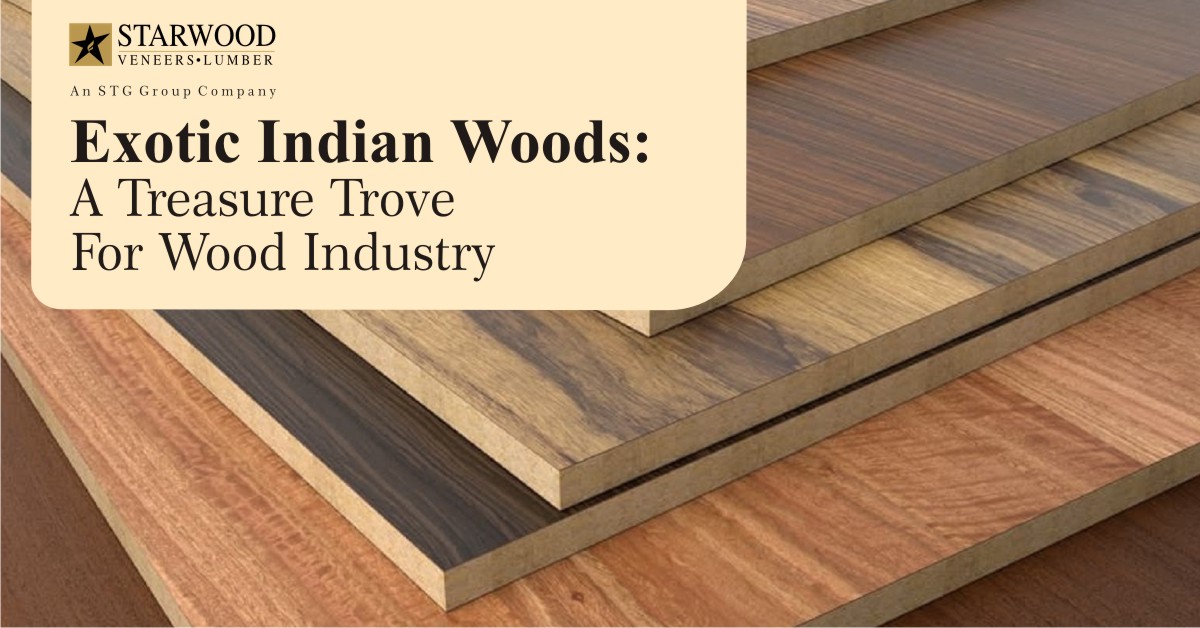India, a land of rich culture, landscape and biodiversity has a huge contribution in the rich wood industry. Each of these exotic Indian species has distinct characteristics, usage and strength.
Let’s see some of the most widely popular Indian Wood Species.
Mango Wood
Mangifera indica is a hardwood tree found across the globe. They are native to India, Myanmar (formerly Burma) and East Asia and are mostly cultivated in India. Mango wood is strong and is fairly water-resistant. Being readily available, mango wood is cheaper than other hardwoods such as teak. It requires little maintenance and is easy to work with. The texture of the wood is smooth and hence turns beautiful upon waxing, staining, and polishing.
It is widely used for manufacturing furniture, paneling, yacht interiors, window frames, etc. Since the Mango tree grows very fast, mango wood is deemed very profitable.
Neem Wood
Scientifically known as Azadirachta indica, Neem is a Harwood tree. Its impressive characteristics make it one of the most popular woods. Neem is not only pest-resistant; it is also fairly strong and split resistant. It’s gorgeous reddish-brown color and subtle aroma makes it a preferred choice of wood for paneling, ornamental ceiling kitchen cabinets, and furniture manufacturing.
Because of its strength, it also serves as a material for constructing oars, cart axles, and felloes for cartwheels.
Acacia Wood
It is popularly known as Babul (Acacia Nilotica) in India. It’s native to Africa, India, and the Middle East, and is an invasive species in Australia. Acacia wood is a popular, durable, and sustainable exotic hardwood that is often used as an alternative to teak.
Acacia has high resistance to water and humid environment, and hence often used as an alternative to teak especially for marine decking and outdoor furniture.
Its strength and durability help it hold its shape without shrinking. It also stands up to regular use without scratches or damage. It is widely used in Flooring, Furniture (especially outdoor furniture), Functional decorative items, like plates, serving utensils, and bowls, Instruments like ukuleles, flutes, and violins, Boat-building.
Sheesham Wood
Sheesham wood is also known as Dalbergia Sisso and is a deciduous tree. It is called Sheesham in the Indian subcontinent. Sheesham is resistant to decay as well as dry-wood termites. It is a hardwood with a medium coarse texture. It doesn’t bend, warp or split and is hence the preferred wood for making cabinets and furniture. The well-defined grain imparts unique color to sheesham. Polishing makes it shine and have a smooth texture.
Sheesham has attributes similar to teak and yet is cheaper. It is extensively used in marine and aircraft interiors as well as for making furniture, door, and windows. Sheesham, like teak wood does not require special care and is relatively low maintenance.
All these woods are extensively used in the Indian as well as the International wood industry. Needless to say, the quality of the wood remains the most critical parameter when it comes to choosing the right manufacturer and exporter.
Starwood Veneers, with their decades of legacy and unparalleled quality, are the most well-known exporter of exotic Indian wood veneers, lumbers and more. They have an impressive range and quality to choose from. Other than the Indian wood species, Starwood is also known in the International and Indian wood industry for their outstanding range of Burmese teak veneers and lumbers. So, if you have a project requiring any of these woods, look no further. Starwood Veneers is the right partner for you.

